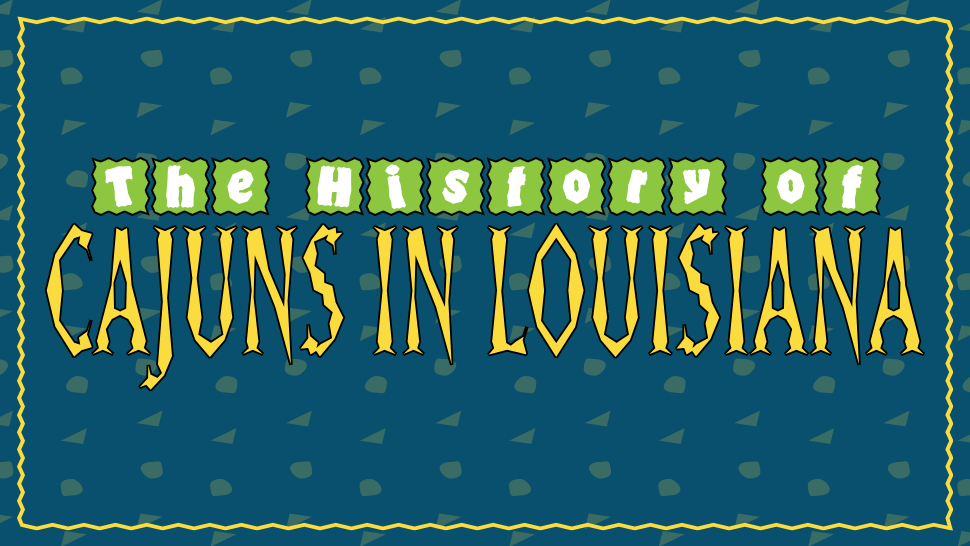Undoubtedly, as sure as the as the cicada is to sing in the summer, Cajun culture is synonymous with Louisiana.
Restaurants as near as Texas and far as London promising to serve authentic Louisiana food, lure hungry diners in with phrases like Cajun cuisine. They trap curious foodies with names like Pelican State, Plaquemine Lock, and Ninth Ward London.
However, outside of Louisiana, people’s understanding of Cajun culture is a bit misinformed.
You see, using phrases like Cajun cuisine and names like Ninth Ward London to describe Louisiana-themed anything points to a fundamental misunderstanding of actual Cajun culture.
Louisiana is unique, and Cajun culture is more unique within its confines.
Yes, Louisianians love Cajun culture, but most of us aren’t members of it. The state is a hotbed of Cajun culture, but only in a very specific area. Importantly, the Cajun descriptor overshadows the contributions made by Creole, Native American, Vietnamese, African American, and other populations to Louisiana’s culture.
So, how did Cajun culture become so intertwined with people’s perception of Louisiana, and how did it come into existence?
Le Grand Dérangement
Le Grand Derangement, or the expulsion of Acadians from the Province of Nova Scotia, Canada, started in 1755. The Acadian’s removal climaxed centuries of conflict between French and English forces.
The descendants of one of North America’s first settlers spread out throughout the British-American colonies, Caribbean, and Louisiana. Their expulsion continued through 1785.
Between 1765 and 1785, about 3,000 exiles settled in South Louisiana, motivated by the Spanish government to populate the territory.
The Creolization of Louisiana
Acadians spread all throughout Louisiana, but the majority settled in a 22-parish, rural area of the state—Acadiana or Cajun Country.
The word Cajun originates from the French pronunciation of “le Acadian,” shortened to “le ‘Cadians.” When the Acadians arrived in Louisiana the word was changed to Cajun by English speakers.
However, before this area became known as Acadiana or Cajun, it was recognized as Creole.
Today, it’s understood that Cajuns descended from the French-speaking white people of Acadiana, while Creoles descended from French-speaking Black or mixed-race people of New Orleans.
Prior to the mid-20th century, the word “Creole” described all French-speaking and Catholic Louisiana natives, regardless of racial designation. In fact, the Cajun identifier was rarely used before the 1960s. White, French-speaking Catholics were known as white Creoles, and Black or mixed-race, French-speaking Catholics were Black Creole.
So how did the two identities converge and then separate?
In the beginning, the Acadians’ arrival necessitated adaptation.
Louisiana was foreign to them in more ways than just location. The climate in the state was warm and humid compared to Canada’s dry, cold.
The Acadians’ survival required them to interact with the original and earlier inhabitants of the land—Natives, enslaved West Africans, German, and Spanish settlers. These inhabitants taught the Acadians to build with cypress and grow rice.
The mixture of Native, West African, German, and Spanish culture began the process of creolization. Acadians enmeshment with these cultures, and their acceptance of the Creole identity finalized it.
Dishes like gumbo found their creators in these kitchens, and music like Cajun and zydeco found their sound.
This combination of cultures not only influenced the food and music, but it also influenced the religion and language.
Parts of Louisiana became and still are uniquely Catholic compared to the rest of the United States. Spanish and African heritage influence further differentiated Louisiana’s Catholicism. In the state, Catholic holidays and traditions are celebrated with flair.
Miles from the reaches of the Bourbon Street festivity, Courir de Mardi Gras, “or Fat Tuesday Run,” prevails. The run celebrates the beginning of Lent with homemade costumes, food, and—yes—a chicken run.
Eucharistic water processions down bayous, like Fete Dieu du Teche, further established Louisiana Catholicism as different. Familiar sights like lawn shrines featuring the Virgin Mary and painted tombs and crypts, all are displays of Catholicism throughout the state.
The French famously associated with Louisiana developed from the inhabitant’s willingness to adopt words from the languages that surrounded them.
In Nova Scotia, dialects from Aquitaine, Brittany, and Normandy shaped how Acadians spoke. People in Aquitaine spoke the French Occitan dialect, while Celtics influenced Brittany’s French, and Norse-speaking Vikings influenced Normandy’s.
Already different from Parisian French, the French spoken in Louisiana expanded further once Acadians arrived.
The Creolization of Acadians, now white Creoles, came to its completion.
The Acadian and Cajun Identity Emerges
Although white Creoles integrated with the unique Louisiana culture when they arrived, they resisted Americanization after the Louisiana Purchase.
In the 1920s, a nationwide effort to unite the country’s ethnic groups under the English language took hold. Educators forbade children from speaking languages other than English in schools. Disobedience meant physical punishment. Again, survival necessitated adaptation, and this deeply affected the culture. White Creole children held their native tongue, and when they grew into adulthood, they kept it from their children.
The Americanization of ethnic groups didn’t end with erasing their languages, it also affected how these groups viewed race.
The racial lens used by Americans to define its people slowly chipped away at white Creoles’ comfort with the identity. Jim Crow and the “one drop rule” divided Black and white Americans into strict categories. With their language under attack, the racial division created another cultural threat.
The association of Creole with Blackness convinced white Creoles to drop the label all together. So, how would the descendants of Acadians identify?
Some looked to the period of the Acadians’ expulsion to develop an identity separate from the Creole one. Le Grand Derangement was mythologized as heroic and sacrificial in poems and movies. Tourism to Nova Scotia by white Creoles became popular.
Instead of calling themselves Creole, they identified as Acadian again. The proud usage of the Cajun identifier—used to insult working-class people—remained years away.
Americanization persisted, but not without pushback. World War II fundamentally changed this. Acadians now felt a strong sense of patriotism, and they eagerly embraced their American identity.
The Revival of the Cajun Identity
The 1920s laid the groundwork for the revival of the Cajun identity in the 1960s.
Leaders like Senator James R. “Jimmy” Domengeaux and Senator Edgar G. “Sonny” Mouton Jr. pushed for reintroduction of French in schools. They succeeded in passing Act No. 409, which established the Council for the Development of French in Louisiana (CODFIL), in 1968.
Although the passage of CODFIL played an important role in revising years of English-only policies, it still had its opponents. Activists, including Dewey Balfa, Barry Jean Ancelet, and others, viewed CODFIL as elitist and bourgeoises.
CODFIL advocated to revive the French language in Louisiana but discouraged the use of creolized French. So, it brought in teachers from France and Belgium to teach the language in schools. Furthermore, CODFIL supporters treated other aspects of the culture, like the music, as a mockery.
The grassroot Cajun movement that Balfa, Ancelet, and other activists stood behind encouraged the use of Louisiana French. It also encouraged the preservation of the culture’s music, food, and traditions.
It’s important to note that CODFIL and the movement to preserve Cajun culture came at a time of racial and ethnic reckoning in the United States. In fact, the movement to preserve Cajun culture took a lot of its inspiration from the Civil Rights Movement.
As the 1960s turned into the 1970s, the movement swelled, while musicians like Balfa brought Cajun music to a national audience. Importantly, this period saw a reclaiming of the Cajun identifier.
Cajun Culture Today
The introduction of Cajun culture into the greater American audience wasn’t without its drawbacks.
During the 1980s and 1990s, the country experienced a Cajun Craze. However, many aspects of the Cajun Craze leaned on stereotypes of Cajun culture.
Restaurants nationwide began selling overly spiced “Cajun inspired” dishes. Filmmakers with little understanding of Cajun culture—the accent and cultural region—made movies attempting to capture the Cajun experience. For example, movies throughout this period treated Cajun Country and New Orleans as one and the same.
Despite this, Cajun culture flourished. The end of the 20th century saw a new crop of Cajun musicians rise to fame—Wayne Toups, BeauSoleil, Zachary Richard, and others. Events celebrating Cajun culture like Festival International de Louisiane are world famous and receive tens of thousands of attendants each year.
Although CODFIL still has its critics, it continues to be one of the largest proponents for French language in tourism, economic development, culture, and education.
Did you learn anything new about Cajun culture? Let us know in the comments!
Once a Pelican State CU member, always a member—through life’s milestones, we’ll always be there to help you with your financial needs. Your Financial Family for Life. Give us a call at 800-351-4877.



